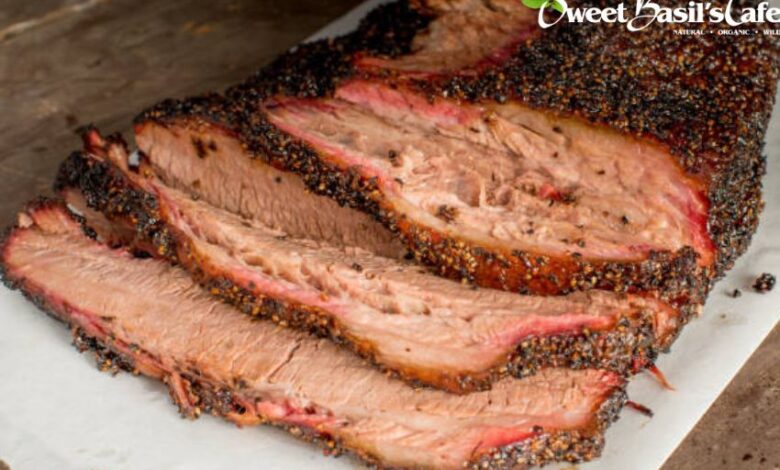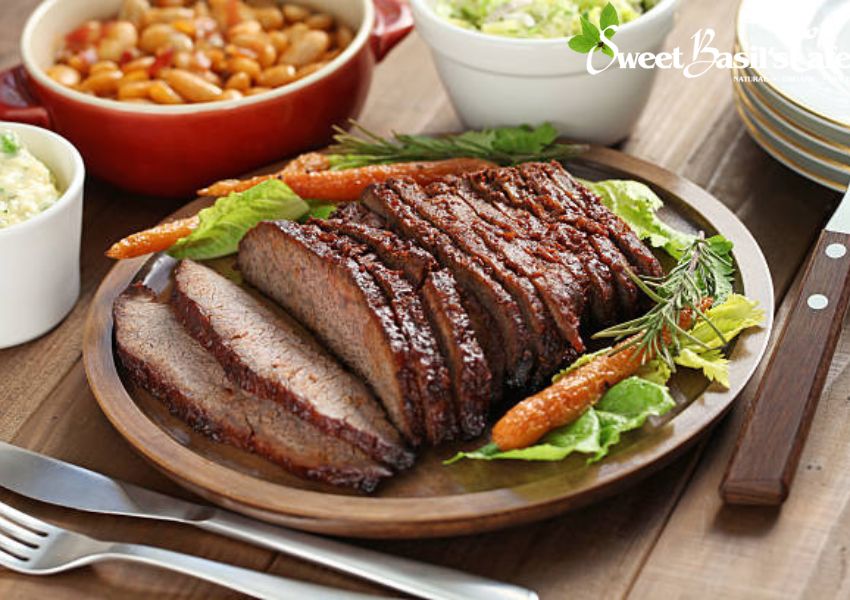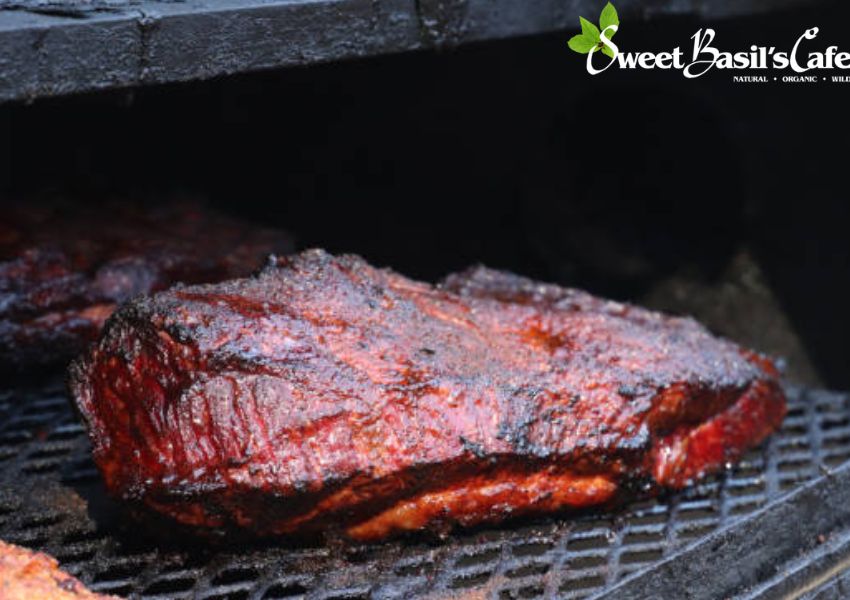Brisket Brine: Should It Be Done?

Brisket brine is a special dish at the party. Do you want to make flavorful and juicy brisket that will wow your family and friends? A secret weapon of BBQ pitmasters is the art of bringing. Brines are saltwater solutions that infuse meats with flavor while also helping them retain moisture during the cooking process. With its combination of technologies, a well-crafted brisket brine can make all the difference when it comes to results in your smoker. In this post, we’re breaking down how to create an amazing brisket brine that will take your smoked meats up a notch!
Types Of Brines
There are numerous methods for bringing, including soaking in a solution, using salt or sugar water, and adding spices.
Brisket brine comes in two primary varieties: dry brine and wet brine. Wet brines use a liquid element, such as water, beer, wine, or vinegar, whereas dry brines entail applying salt straight to the meat.

How To Brine Beef Brisket
Simple steps to brine brisket are as follows:
Determine how much brine you will require in the first step. Placing the brisket in the container and then completely covering it with water is the simplest way to determine how much water to use.
- Step 1: You need the remaining water once the brisket has been removed.
- Step 2: For every cup of salt you use, you must first boil two cups of water. Add the salt and the spices of your choice once the water has boiled. Thyme or rosemary are also wonderful alternatives, as are black peppercorns.
- Step 3: Stir the brine for a full minute to completely dissolve the salt in the boiling water. After a little cooling period, add the remaining water.
- Step 4: Add any additional ingredients now, before adding the brisket, if your recipe calls for them. The brisket should now be added to the water.
- Step 5: For every pound of meat, let the brisket soak in the brine for an hour.
- Step 6: Drain the brining solution from the brisket. Run the surface under cold water if there is a lot of salt present before using paper towels to dry it off.
- Step 7: Smoke the brisket using the recipe you’ve chosen.
What About A Dry Brine?
Dry brines are still another choice.
- Step 1: Measure out 1/2 teaspoon of kosher salt for every pound of meat in order to dry brine the brisket. For the brining procedure, kosher salt is preferable to table salt because the flakes of salt are much better at drawing out moisture.
- Step 2: Use paper towels to pat the brisket dry once you’ve finished the first step. When the brisket is dry, you may rub it with salt, making sure to work it into all the nooks and crannies.
- Step 3: After that, you should set the brisket on a wire rack that is positioned inside a baking tray. This is done to collect any fluids. Place your baking sheet in the refrigerator in step four. It should be left undisturbed for at least two hours, preferably all night.
- Step 5: Take the brisket out of the fridge when it’s time to start smoking. This is the moment to add more spices if you wish to.
- Step 6: Cook your brisket by placing it on the barbecue.
Should You Brine Brisket?
Bringing the brisket can help to keep the meat from drying out while it cooks. Brining is a fantastic way to enhance the flavor of the meat.
However, there are advantages and disadvantages to taking into account that could assist you in determining whether you want to brine your brisket or not.
Positives Of Brining
- Brining helps to lock in moisture and tenderize the meat.
- It can give the brisket extra flavor by infusing it with spices and herbs.
- Brining has a milder taste than marinating, allowing you to enjoy more of the original flavors from the meat.
Locks In Moisture
Dry brines are still another choice.
Tenderizes The Meat
Measure out 1/2 teaspoon of kosher salt for every pound of meat in order to dry brine the brisket.
Adds Flavor
For the brining procedure, kosher salt is preferable to table salt because the flakes of salt are much better at drawing out moisture.
Potential Downsides Of Brining
Here are a few potential downsides of brining:
Adds Time To The Process
Bringing your beef can significantly extend the overall cook time for a brisket brine, which is already a laborious operation. If you’re pressed for time, you can decide to skip this step.
Bringing Can Make The Meat Salty
While bringing can enhance the brisket’s flavor, if you’re not careful, it can also make it extremely salty.
Finding the ideal balance can be challenging, particularly if you lack expertise.
It’s up to you whether you chose to brine or not salt your brisket. While many individuals fervently support the bringing method, others do not, and it frequently depends on you and your preferences.
As you can see, bringing has advantages and disadvantages, so it’s crucial to think about what you aim to achieve.
What Makes A Brisket Tough?
- Due to the fact that brisket brine is not the easiest meat to cook, it may come out tough for a variety of reasons. The fact that brisket was improperly cooked is one of the key causes of its toughness. Both undercooking and overcooking a brisket fall under this category. Pitmasters with experience are familiar with the stall, which occurs when the brisket hits a specific temperature and seems to cease cooking entirely.
- Inexperienced cooks might not have planned for this possibility and could easily take the meat out of the smoker too soon. In general, beef brisket should be cooked until it achieves an internal temperature of 195 degrees.
- Although 205 to 210 degrees is optimal, it’s crucial to understand that the temperature will increase once the brisket is taken off of the smoker and given time to rest.
- But premature brisket removal can result in extremely tough meat. The meat probably won’t have the tender texture you’re looking for if it’s either below or above this temperature. Neglecting the resting period after removing the brisket from the smoker is another factor that might alter the texture of the meat.
- The majority of the brisket’s fluids will be lost if you attempt to slice it right away.
- The meat will become tough as a result, and you will also lose most of the flavor that you worked so hard to develop. So that it will still be juicy when you serve it, let the brisket rest for at least 30 minutes.
Overall, by following a few simple instructions when cooking your beef brisket, you may avoid these issues.
Tips For Brining Brisket
When bringing brisket, there are many suggestions to keep in mind.
Always Refrigerate The Brine
After boiling the water and before adding the meat, you must be sure to chill the brining solution.
The “danger zone,” which is between 40 and 140 degrees Fahrenheit, could be reached by the meat if the brine isn’t cold.
Make Sure That The Brisket Is Fully Submerged In The Brine
Ensure that the brisket is completely submerged in the brine. If you don’t do this, some of the joint won’t be brined and won’t benefit from the brining in the same way that other parts will.
Don’t Leave The Brisket In The Brine For Too Long
Last but not least, you need to make sure that you take the brisket brine out of the brine in plenty of time. While bringing a brisket overnight is convenient, in general you don’t want it to brine for more than one hour per pound.
If you leave the meat in the brine for too long, it will turn brown and lose flavor.

See More:
- Is Brisket Beef or Pork? Or Both?
- Should You Cook Brisket Fat Side Up Or Down?
- What Part Of A Cow Is Brisket?
Conclusion
Now that you know how to make a brisket brine, get out there and give it a try! This classic method of seasoning beef is sure to result in a delicious, juicy finished product. With just a few ingredients and some time, you can create something truly special. Sweet Basil’s Cafe hopes it helps you to make this brisket brine. So what are you waiting for? Get cooking!
BRINED SMOKED BRISKET

There are a few secrets to this smoked brisket: it is brined, heavily spiced, and cooked to perfection over a low heat.
- 5-7 pound flat cut brisket
- ½ cup kosher salt
- 1 cup up brown sugar
For the rub
- 2 tablespoons salt
- 3 tablespoons freshly cracked black pepper
- 2 tablespoons chili powder
- 2 tablespoons garlic powder
- 2 teaspoons onion powder
- 2 teaspoons cayenne pepper
-
Start combining the sugar and salt in six quarts of boiling water. After that, stir in 6 cups of ice and let the mixture to cool.
-
Remove the brisket from the fridge, then pat it dry. The rub mixture is used to season the brisket.
-
Set your smoker to 250°F (121°C) in advance.
-
Smoke it for three hours.
-
After 3 hours, remove the brisket, wrap it in foil. Raise the temperature to 275°F (135°C).
-
After then, take the foil off and put the food back on the smoker for a further 30 minutes.
The brisket must be completely submerged in the brine. Ensure that the brisket is completely submerged in the brine.
The brisket shouldn’t be left in the brine for an excessively long time. Last but not least, you need to make sure the brisket is taken out of the brine in a timely manner.
